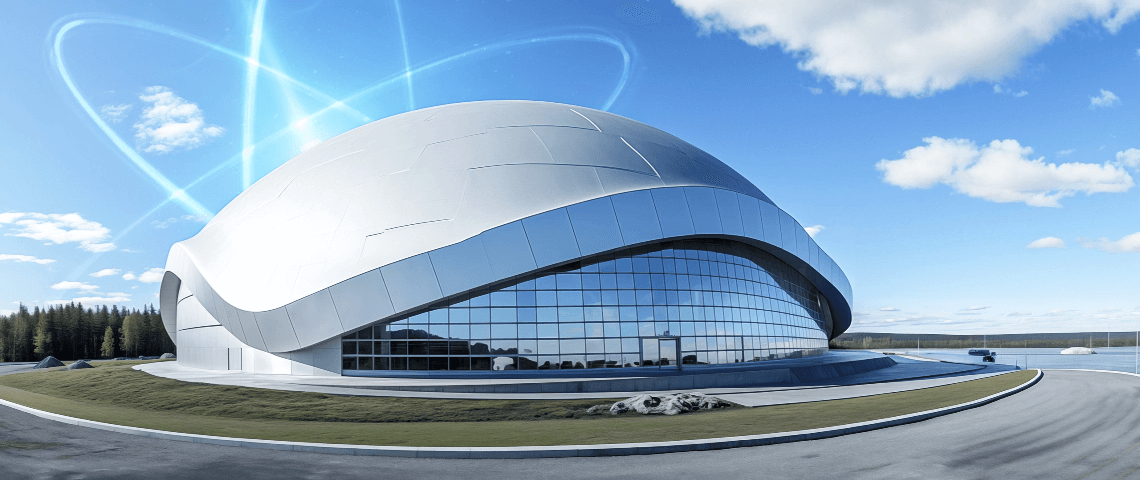Stainless steel has a big future in small modular reactors


Andy Backhouse, Outokumpu Lead Technical Manager, explains why the successful development of the new generation of SMRs will rely on specialized stainless steel grades.
Nuclear energy is currently enjoying a resurgence thanks to its capability to produce the low-carbon electricity essential for the world to meet its Net Zero ambitions. This will see the construction of several large projects each capable of generating gigawatts (GW) of electricity. However, a potentially even more important development is the evolution of the new generation of small modular reactors (SMRs).
SMRs are defined by their power capacity, typically up to 300 megawatts electric (Mwe) per unit, rather than by the nuclear technology they use. In fact, according to the International Atomic Energy Authority (IAEA), in 2022 there were about 50 SMR designs and concepts in various development stages around the world.
The small, modular nature of SMRs offers a number of benefits. First, they can be manufactured on an assembly line, much like the factory assembly of passenger aircraft, with prefabricated units shipped ready for installation on site. This approach offers significant savings in construction time and therefore costs. In addition, as local demand for electricity increases further units can be deployed on an incremental basis.
Because SMRs have a compact footprint they can be installed at locations where larger nuclear power plants would not be feasible. This includes siting units to feed into an existing grid, remotely off-grid or to act as a backup source of electricity.
Furthermore, the majority of SMR concepts are generally simpler than large-scale reactors, with a reliance on passive safety systems inherent in their design. Safety is further enhanced by their low power and operating pressure.
The stainless steels used currently in the nuclear industry are generally based on well-established and widely available standardized grades such as 304L and 316L. The same is likely to apply to SMR designs. However, they could have a significant positive impact on the supply chain. The reason is that stainless steels approved for nuclear applications are based on low-cobalt variants. This creates a challenge for manufacturers like Outokumpu since an engineering, procurement and construction (EPC) contractor working on a single large project may want to submit an order for just 5, 10 or 20 tonnes of low-cobalt 316L spread across several product forms. Yet bulk steelmaking typically produces batches of 60 - 100 tonnes.
Since SMRs will require serial production on a large scale to be commercially viable they will create predictable ongoing demand for low-cobalt stainless steel. In turn, steel mills and distribution companies will be able to schedule regular production of this critical material in the required grades and product forms.
In addition to the well-established 304L and 316L grades, it is likely that further developments in SMRs, such as very small modular reactors and micro modular reactors (MMRs) will also require other types of stainless steel to address new technical challenges.
A good example is the development of energy storage systems that will enable SMR projects to meet varying demand while the reactor delivers constant baseline output. One possible technology is molten salt energy storage. This has the advantage of scalability so that a system can store as much energy as needed to deliver peak demand.
The challenge with using molten salt is that it is highly corrosive. It must therefore be contained in vessels made from material with high corrosion resistance, as well as high-temperature capability.
Outokumpu has experience in similar applications from our involvement in Concentrated Solar Power (CSP) projects such as the Crescent Dunes Solar Energy Plant in Nevada, where solar mirrors focus solar radiation on an elevated tank that is filled with potassium nitrate. This absorbs solar energy during the day and reaches temperatures of over 600°C. When peak demand hits in the evening, the salt is used to transform water into superheated steam to drive a turbine and generate electricity.
The salt storage tank and other equipment are built from a special grade of stainless steel, Therma 347H. This was developed for high-temperature applications and can also withstand extensive exposure to salt.
One issue with Therma 347H is that it can suffer from in-service cracking resulting from low ductility in the vicinity of welds. Outokumpu is working to develop alternative grades that retain better levels of ductility to mitigate against such problems. It’s likely that these grades will have a role in some MMRs that feature molten salt as coolant.
micro modular reactors that are being evaluated for remote communities and industrial facilities that are isolated from the grid.
The operating philosophy for these sites is to work on a fully autonomous basis with little operator intervention. This will rely on materials and systems that do not need maintenance. Therefore, operators will want structures and tanks that do not corrode and will never need to be painted or inspected.
This creates a case to use duplex stainless steels for structural elements. Duplex stainless steels provide a combination of high strength and high corrosion resistance. They were developed for the offshore oil and gas industry, where they were used to build long-lasting structures. More recently, duplex grades have been adopted for bridges.
Some duplex grades also have an advantage for SMRs as they are already on the approved list of materials for the nuclear industry.
Stainless steel has an important role to play in ensuring a long and safe operating life for nuclear reactors. This is especially the use for the SMRs that are set to transform the industry. Whatever the designs that eventually emerge from the pack, Outokumpu is ready to support SMR projects with the ideal grades developed to meet both their technical and commercial needs.
Best wishes,
Outokumpu team
This might happen because of Ghostery or adblocker. Try disabling them and refresh the page.